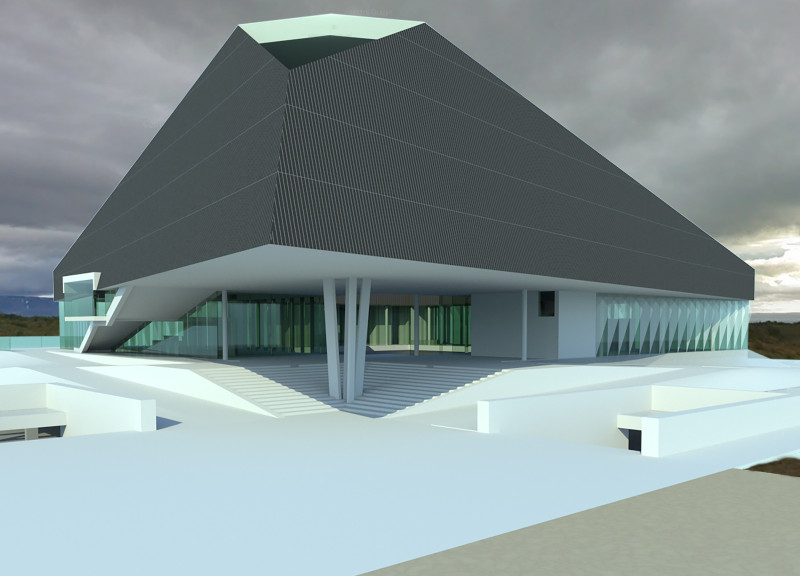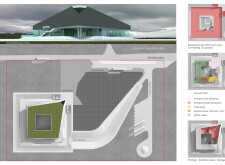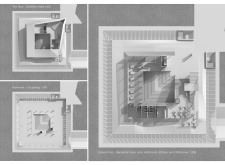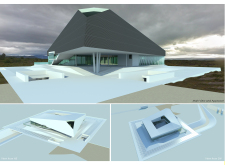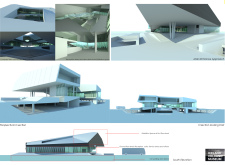5 key facts about this project
One of the primary functions of the museum is to educate the public about the geological processes that shape Iceland’s landscape. The structure is divided into three levels, each serving specific purposes. The basement provides essential parking facilities, accommodating up to 123 vehicles. The ground floor includes the reception area, café, and service zones, ensuring a welcoming environment for visitors. The first floor is dedicated to exhibitions that allow for flexible layouts to accommodate varying displays, enhancing visitor interaction.
The architectural design features a distinctive geometric form that draws inspiration from volcanic topographies. A sloped roofline and angular shapes reflect the surrounding landscape while optimizing structural stability. The primary materials utilized in construction include concrete, glass, and aluminum panels. Concrete serves as the main structural component, providing durability, while the glass façade facilitates natural light and panoramic views of the natural environment. Aluminum panels are employed to add texture and visual interest to the building’s exterior, echoing the layered geological features found in volcanic formations.
The approach to material selection and form is a defining aspect of the museum’s design. By utilizing local materials and sustainable construction practices, the project emphasizes a connection to the site and its natural environment. Large glass panels allow for transparency and a relationship to the outdoor surroundings, enabling visitors to engage with the landscape while inside the building. This connection to nature is further reinforced through the building’s orientation, which maximizes views of notable geological landmarks.
The integration of interactive elements within the exhibition spaces is another unique aspect of this project. Fluid circulation paths encourage exploration while promoting educational engagement through hands-on exhibits and informative displays. The spatial organization prioritizes visitor experience, allowing for a seamless transition between different exhibition concepts while fostering a feeling of immersion in the volcanic narrative.
The architectural design of the Iceland Volcano Museum stands as a relevant advancement in the field of architecture, focusing on education, environmental context, and user experience. For more detailed insights into the project, including architectural plans, architectural sections, and a deeper exploration of the architectural ideas presented, readers are encouraged to examine the complete project presentation.


